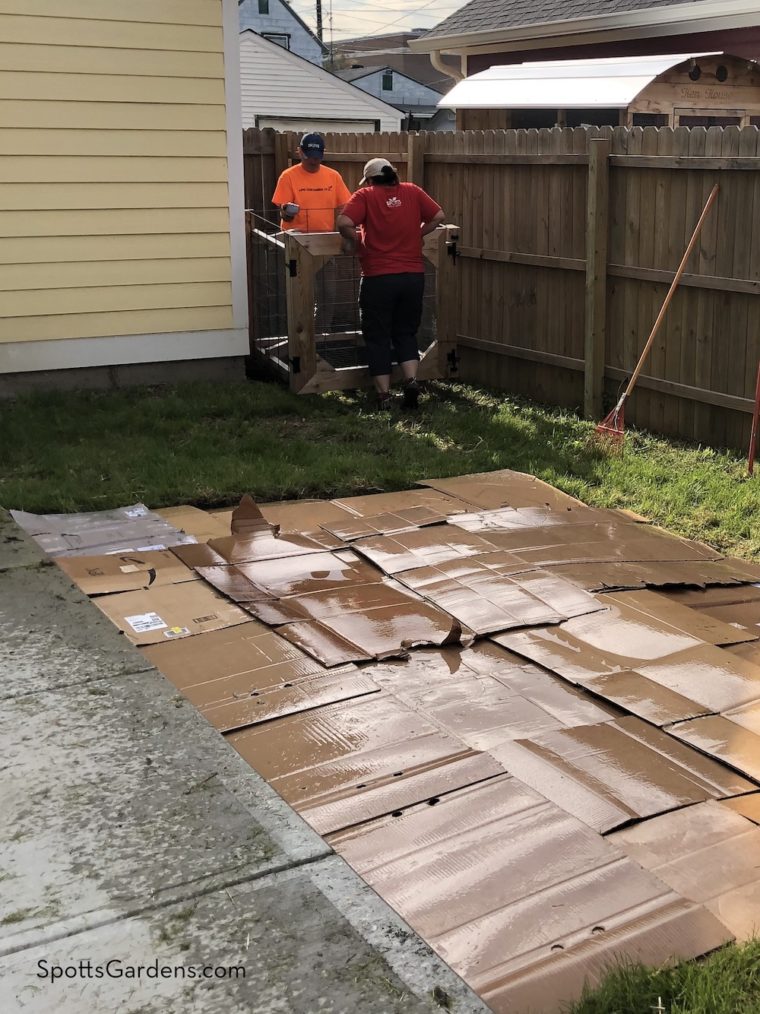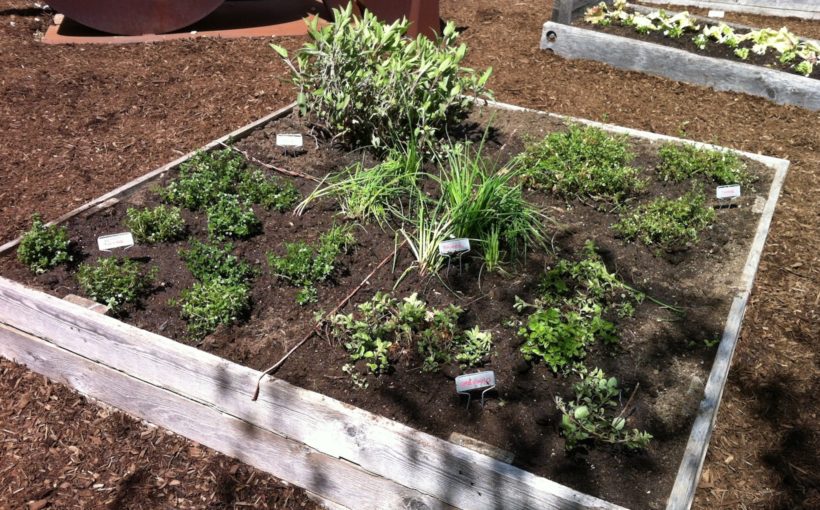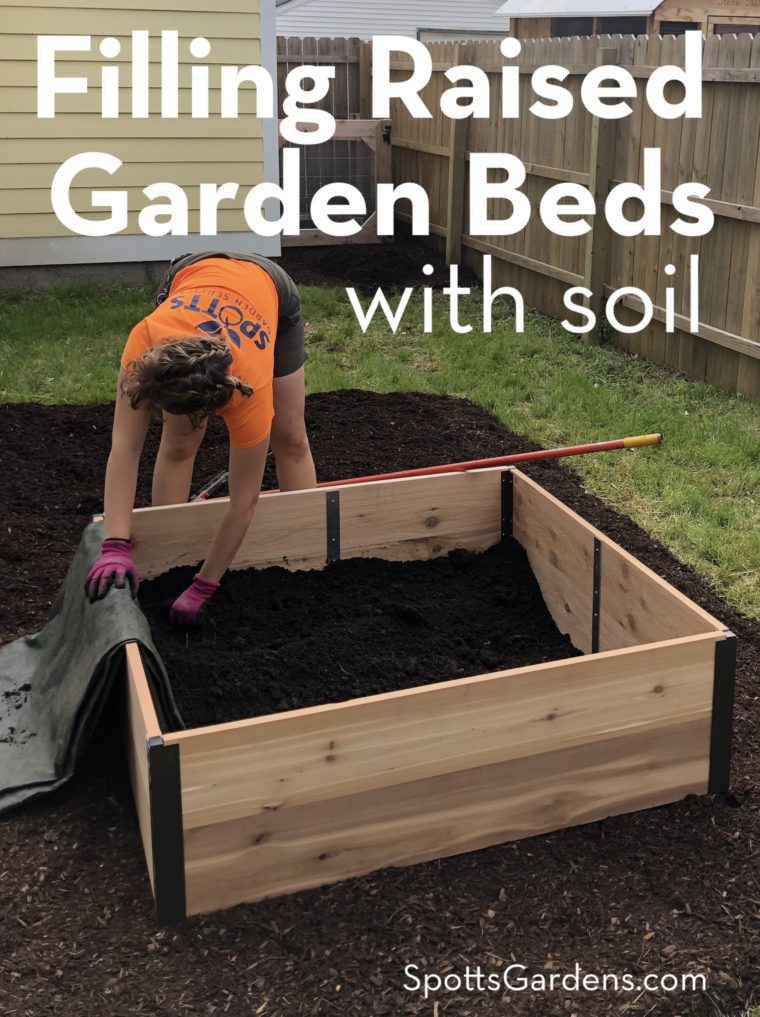Whether you’ve purchased raised garden beds or built your own, you’ll need to fill them. Read on for instructions that will save time and money. Or if you’d rather have us do it, contact Spotts Garden Service!
(Not sure a raised bed is right for you? Check out When to Choose A Raised Bed Garden.)
Placing Raised Beds
Smooth out the ground where your beds will be, then place your empty beds on top.
Don’t use landscape cloth under your raised beds. As you use your beds, the soil underneath them becomes richer. Eventually, you can take advantage of that richness by planting deeper crops like carrots—but not if landscape cloth is in the way.
If you’d like to smother the grass where your beds will be, use sheet mulch. Lay down wet newspaper several sheets thick or a layer of wet cardboard, then lay the empty bed on top of that. The paper will kill whatever’s beneath it but will eventually break down so that you can plant through it.
To reduce weeds, we usually sheet mulch the entire area where raised beds will be, including pathways around them (see photo below).
If digging rodents are a problem in your garden, line the inside of your beds with chicken wire or hardware cloth, bending the edges so that it comes partway up the sides of the bed.

Filling Raised Beds
We fill our beds with half compost and half topsoil. It’s economical, the soil gives the plants’ roots something to hold onto, and the compost feeds the plants.
We buy soil and compost in bulk, which is sold in cubic yards. To figure out how much material to use for a 4′ x 4′ x 8″ bed, here’s the math:
- First convert everything to feet: 8″ = 2/3′.
- Then figure out the volume of the bed using feet: 4′ x 4′ x 2/3′ = 10.67 cubic feet
- We need half of this volume to be topsoil (5.33 cubic ft) and half compost (5.33 cubic ft).
- One yard of compost or topsoil is 27 cubic feet (3′ x 3′ x 3′).
- So we need 5.33 cubic feet/27 cubic feet = .19 cubic yards each of topsoil and compost.
If you only have one bed, it might be worth buying bagged compost and topsoil. For anything larger, get your materials in bulk. They’re far cheaper.
If your topsoil and compost aren’t already mixed together, dump in a layer of topsoil, then compost, then topsoil, then compost, etc. That way, the compost and soil are evenly distributed without your actually having to mix them.
Use a rake to smooth off the soil at the top of the bed. The soil will settle, so you can fill right to the top of the bed. But if you’re planting right away, leave a bit of room at the top of the bed so that rain doesn’t wash the soil out of the bed.
Now Get Growing!
Now that your raised beds are filled and ready to go, check out some of our other food-growing resources.

